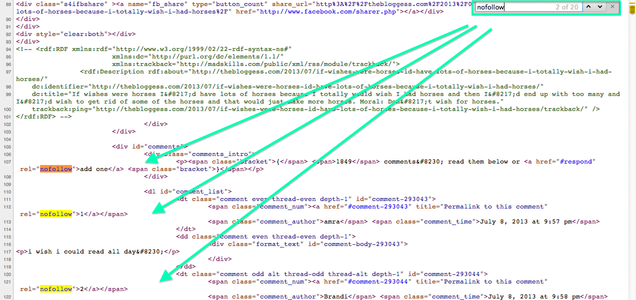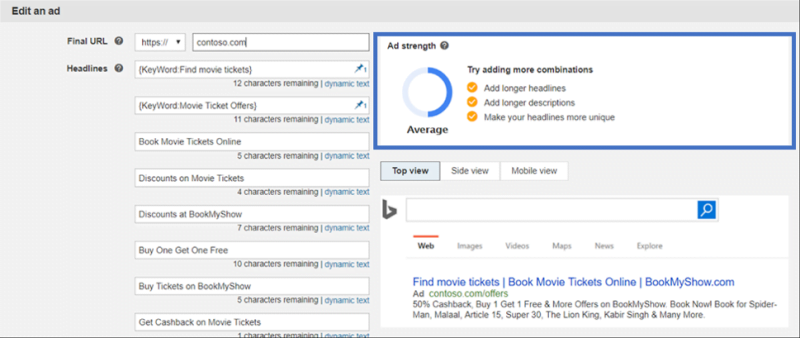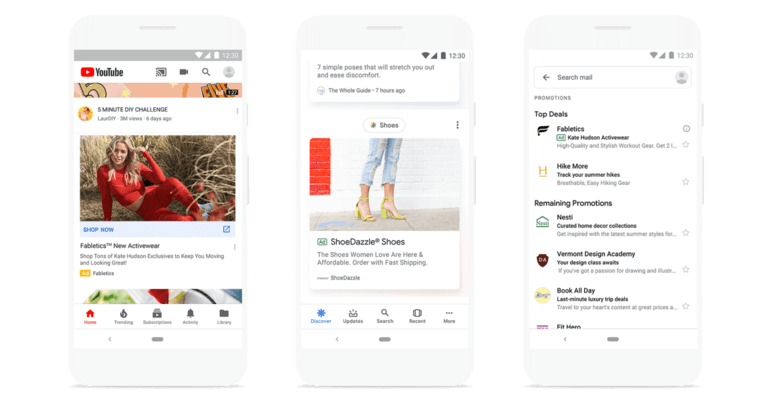
Google Changes Nofollow Link Guidelines & More Recent News
Hey, everyone! Welcome back to the blog for another online advertising news round-up. We’ve got seven stories for you this week: Google changing the way it interprets nofollow links, Facebook testing in-app checkout, and more! Let’s dive in.
1. Google announces changes to nofollow links
In an effort to aggregate more information and “better understand unnatural linking patterns,” Google has announced that they’ll now interpret the nofollow link attribute (i.e., rel=“nofollow”) as a “hint” rather than as explicit instruction to ignore the linked content. Additionally, Google has announced two new link attributes that they’ll also interpret as hints:
-
Sponsored (rel=“sponsored”): to flag a link as part of an advertisement, sponsorship, or some other compensation agreement.
-
User-generated content (rel=“ugc”): to flag a link within user-generated content, such as a comment on your blog post.
Launched in 2005 to combat comment spam, the nofollow attribute has long been used by website owners and SEOs to indicate that certain links aren’t meant to endorse the corresponding content or publisher. Accordingly, Google has ignored links flagged with the nofollow attribute when ranking the organic search results.
You can use the “Inspect” function within Chrome to find the nofollow links on a page.
In their announcement blog post, Danny Sullivan and Gary Ilyes explain that Google’s ability to evaluate the characteristics of individual links—e.g., anchor text—gives them access to important information they can use to better understand linking patterns and, thus, put an end to nefarious link schemes. In other words, ignoring links with the nofollow attribute altogether has kept Google from collecting as much information as they can. With this new model, you can still refrain from endorsing certain publishers while allowing Google to collect information they consider useful.
There’s no need for you to change any nofollow links currently on your site. When appropriate, you’re free to append multiple attributes to a single link (e.g., rel=“nofollow ugc”). And, no—Google does not anticipate that this change will have a substantial impact on rankings.
2. Facebook testing in-app checkout
Continuing to capitalize on the rise of social shopping—the practice of selling products on social media rather than simply promoting products on social media—Facebook has confirmed that it’s testing in-app checkout for dynamic News Feed ads. Though a spokesperson has stated that the test involves a “small subset” of advertisers, Facebook has not revealed who has access to in-app checkout or why they were selected for the test.
Via Facebook.
Dynamic ads are built to make your Facebook remarketing efforts more personalized and effective. When your dynamic ad is served to a user, Facebook automatically optimizes the promoted products or offers according to the user’s past behavior on your website or within your app. If the prospect has shown clear interest in a handful of specific products, Facebook will dynamically update your ad to highlight them.
Thanks to their personalized nature, dynamic ads were already a great way to close the deal with your remarketing prospects. Now that users have the opportunity to make purchases without leaving the Facebook app, the effectiveness of dynamic ads should only improve. This is pure speculation, but based on past betas, we’re willing to bet Facebook will roll out in-app checkout to all advertisers at some point next year.
Tangentially, Facebook is also testing an expansion of in-app checkout on Instagram—a feature that’s currently limited to a small group of brands. Since its launch earlier this year, Checkout on Instagram has only been available for organic posts. Now, Facebook is allowing the brands with access to turn those organic posts into ads.
3. Google bans ads for unfounded medical treatments
To protect vulnerable users from malicious advertisers, Google has banned ads for “unproven or experimental medical techniques,” such as stem cell therapy, cellular therapy, and gene therapy. Additionally, treatments lacking scientific basis and treatments lacking sufficient clinical testing are no longer eligible for promotion, either.
Obviously, this is an important step towards shielding users from products and treatments that may have adverse effects on their health. However, in order to allow legitimate actors to inform the public about their experiments and findings, Google will continue to permit advertising for medical research. As breakthroughs occur, Google will revisit the policies as needed.
4. Microsoft rolls out RSA beta to everyone
Continuing the not-so-gradual march towards fully automated search advertising, Microsoft has officially rolled out the responsive search ad beta to all Bing advertisers. To join the beta, you can either reach out to your account representative or complete this interest form.
With a responsive search ad, or RSA, you hand over control of the text ad creation process to Microsoft’s algorithms. After you’ve submitted up to 15 headlines and four descriptions, Microsoft will test different variations—more than 32,000 are possible—to determine which work well and which don’t. Eventually, users will only see your top-performers; the rest will get shelved.
The chief advantage of using an RSA—which Google initially rolled out last year—is that you can save a bunch of time. The chief disadvantage, of course, is that you’re almost completely sacrificing control over the creation of your text ads. True—you’re the one who creates the initial headlines and descriptions. But from that point on, you’re at the mercy of machine learning.
Give the RSA beta a try. There’s a chance you’ll see improved performance as you reclaim a substantial portion of your workday. However, make sure you’re simultaneously running standard text ads as well. Directly comparing the performance of the two ad types is the only way to determine which method works best for you.
5. Google will soon integrate Express into Shopping
Per an email sent to customers last week, Google plans to retire the Google Express brand and integrate it into the new Google Shopping experience over the next few weeks. Following up on the announcement originally made at Google Marketing Live, the plan to retire Google Express marks a shift in Google’s approach to challenging Amazon’s dominance in ecommerce.
Google wants you to shop across YouTube, Discover, Gmail, and more.
Google Express, for those who don’t know, was Google’s attempt to create a centralized online marketplace where shoppers could browse products from major retailers like Target, Walmart, Best Buy, and so on. In other words, it was Amazon—minus the private-label products. As you may already know from your own online shopping experience, Google Express never really took off. Even among the people who knew it existed—not a large group—it failed to present itself as a compelling alternative to Amazon. Plus, the major retailers who were selling on Google Express were simultaneously finding ways to make their own marketplaces more appealing.
So, as Google ramps up its efforts to win over both ecommerce advertisers and online shoppers, they will integrate Google Express into the new Shopping experience. Whether someone wants to make a purchase from the search engine results page, Google Images, YouTube, or Google Discover, they’ll have access to the universal shopping cart, easy checkout, and free shipping options that used to be the main selling points of Google Express.
6. Microsoft opens betas for two new audiences
In another step towards parity with Google Ads, Microsoft Advertising has announced open betas for two new audience targeting solutions: product audiences and similar audiences.
A product audience is basically a remarketing list for a specific product in your catalog. If a prospect visits your website and shows interest in a particular product, they’re added to the audience. Then, when they return to Bing to search for that same product, you’re there with the perfect Shopping ad. This beta is now open to ecommerce advertisers in the US, Canada, Britain, India, France, Germany, and Australia.
A similar audience is the paid search equivalent of a lookalike audience on Facebook and Instagram. Basically, it allows you to reach new prospects who are similar to your existing customers. Similar audiences have been available in Google Ads since 2017, and as you can imagine, they tend to drive above-average conversion rates. This beta is now open to search advertisers in the US.
7. Google makes it easy for users to skim videos
To help Search users find the information they’re looking for faster, Google has announced that they’ll now link to key moments in YouTube videos directly on the SERP. If the content creator includes timestamp information in the video description, Google will use that to highlight key moments and direct users where they want to go. Here’s how the new feature looks in action:
Via Google.
If creating YouTube videos is part of your content marketing strategy (we recommend it), start including specific timestamp information in your video descriptions. As users get accustomed to this new feature, some may begin to disregard videos that don’t allow them to skim through. To avoid a decline in valuable traffic directly from the SERP, start adding timestamps today.










![Search Advertising Benchmarks for Your Industry [Report]](https://www.wordstream.com/wp-content/uploads/2024/04/RecRead-Guide-Google-Benchmarks.webp)



Comments
Please read our Comment Policy before commenting.